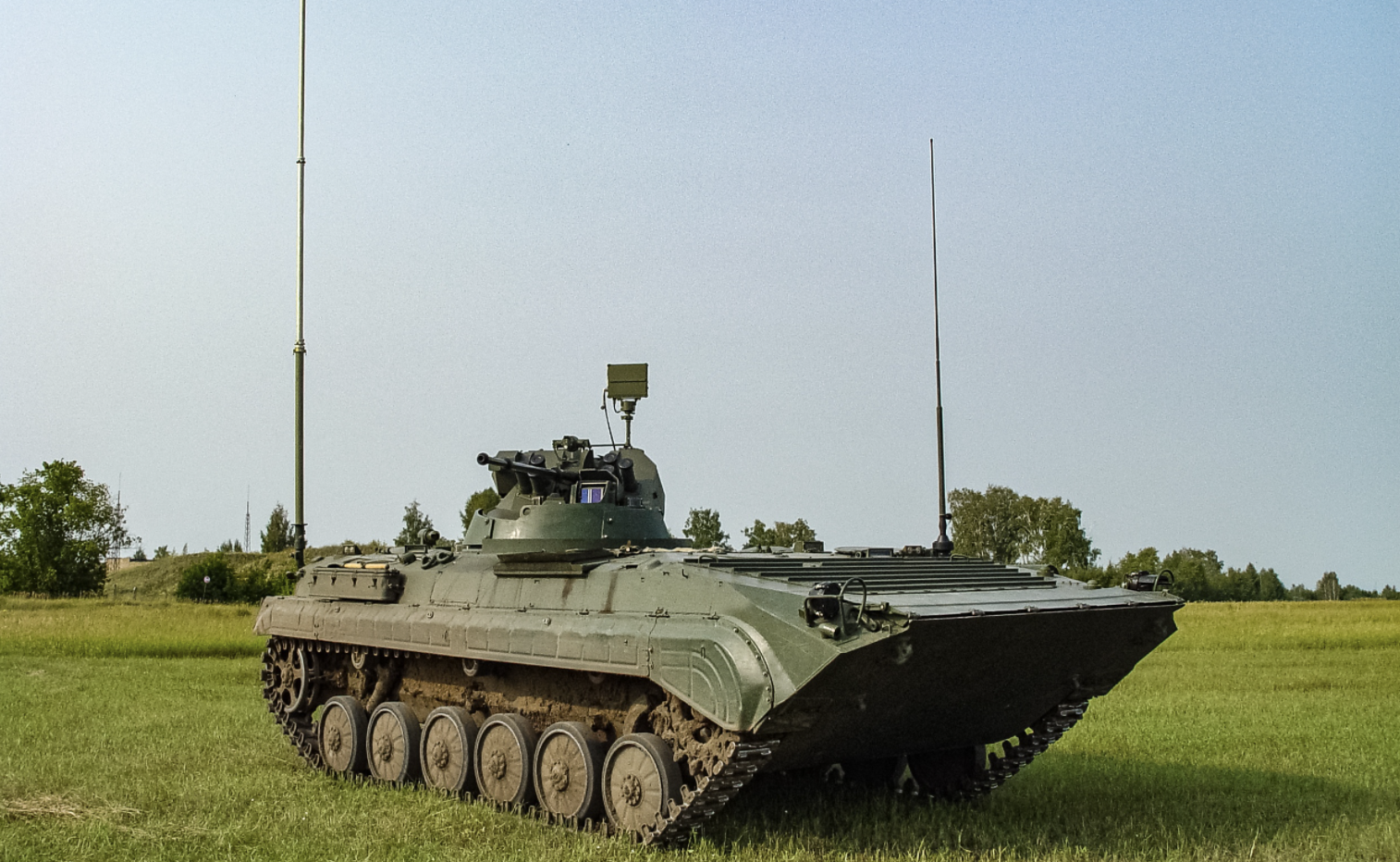The Rubtsovsk branch of the Uralvagonzavod Corporation (UVZ) handed over to the Russian Ministry of Defense a batch of modernized command combat reconnaissance vehicles (BRM-1K), the press service of the enterprise reported.
It is specified that in the course of work, modern engines, communications equipment and on-board electronics, as well as navigation equipment, observation devices and reconnaissance equipment were installed on combat vehicles.
According to UVZ, the updated BRM-1K now has a unified fighting compartment from the BTR-82A.
This module with stabilized cannon and machine gun armament is equipped with a 30 mm 2A72 cannon with 300 rounds of ammunition and a 7.62 mm PKTM machine gun.
As noted in Rosoboronexport, the TKN-4GA-01 combined sight provides the gunner with firing from cannon and machine gun weapons at any time of the day from a standstill and on the move.
“Now the effectiveness of the BRM-1K in conducting tactical reconnaissance in modern operations has increased significantly.
And due to the increase in tactical and technical characteristics and firepower, the combat vehicle has reached the level of combat effectiveness of modern infantry fighting vehicles, ”the Uralvagonzavod press service emphasized.
The state contract for a major overhaul with the modernization of command combat reconnaissance vehicles was signed at the Army-2020 forum by Russian Deputy Defense Minister Alexei Krivoruchko and UVZ Deputy General Director Vyacheslav Khalitov.
Upgraded BRM-1K
vk.com
© Uralvagonzavod
scout car
BRM-1K was created on the basis of the BMP-1 in the early 1970s.
In the Soviet army, it replaced the floating light tank PT-76, which had been in service since 1951.
The serial production of this equipment was launched at the Kurgan and Rubtsovsk machine-building plants, and in total more than 1,500 BRM-1K units were produced.
In general, the design of the combat reconnaissance vehicle repeats the BMP-1.
In front of the hull is the engine compartment, in the central and aft - the fighting compartment.
The hull of the machine is welded, and the turret is capable of circular rotation.
The large aft hatches for landing infantry were replaced on the BRM-1K with similar, but smaller ones, designed for the landing of scouts.
In addition, a container with additional radio antennas was installed above the hatches.
The machine is designed to conduct reconnaissance operations at any time of the day as part of reconnaissance groups to a depth of 50 to 80 km from the places of deployment of their troops.
BRM-1K is capable of detecting camouflaged objects in conditions of limited visibility, determining and transmitting the coordinates of targets, hitting open and covered enemy manpower.
“The purpose of this machine is to conduct reconnaissance at the forefront.
She has very good optics and other means of observation that allow us to detect enemy positions, ”Dmitry Litovkin, editor of the Independent Military Review newspaper, explained in a comment to RT.
The vehicle's armor helps protect the crew and internal equipment from heavy machine guns, small-caliber automatic cannons, and fragments of field artillery shells.
In addition, the BRM-1K is capable of forcing water barriers without prior preparation and has equipment to detect operating enemy radars and mines.
The functions of the BRM-1K also include conducting chemical-radiation reconnaissance and providing radio communications.
Prior to the upgrade, the crew of the BRM-1K consisted of six people: the commander of the vehicle, gunner, radiotelegrapher, driver-mechanic and two paratroopers.
Information about the composition of the crew of the updated car is not yet available.
"Great modernization resource"
According to analysts, the modernization of command combat reconnaissance vehicles made it possible to adapt them to work in modern combat conditions.
“Modernization is aimed at bringing this technique back to life.
The most important and expensive part of any armored vehicle is an armored capsule, and it is already possible to put a new engine, modern transmission, weapons and electronics into it.
Which is what was done.
It turns out an inexpensive and efficient machine, ”retired colonel Viktor Baranets said in an interview with RT.
Upgraded BRM-1K
vk.com
© Uralvagonzavod
A similar opinion is shared by Dmitry Litovkin.
“In the BRM-1K, the electronics, fire control system, chassis and engine were updated.
This newborn is vastly superior to its parents.
The updated vehicle will be a good reinforcement for our troops, ”the expert noted.
He believes that the survivability of this technique, created back in the 1970s, is due to the large reserve for modernization, which was provided by the developers.
“She, like the BMP-1, has an unusually large modernization resource,” the specialist explained.
In turn, Viktor Baranets drew attention to the fact that a large number of these machines were produced in the Soviet years.
“A huge number of them were produced in the USSR - about one and a half thousand.
Many armies of the world still operate this technique.
Accordingly, by putting a new engine, transmission, electronics and weapons on the old building, you get - well, not for two kopecks, of course, but for a relatively small amount - a modern car.
Buying a new one, for example, a BMP-3, is expensive.
And by upgrading the old equipment, you get a machine of comparable quality.
This is a normal practice,” says the analyst.
According to experts, the updated BRM-1K will be able to be used in the army for a long time.
“If the armored capsule was not physically damaged during use, the service life may be even longer.
By changing the filling, you can extend the life of the car for a significant amount of time,” concluded Baranets.

